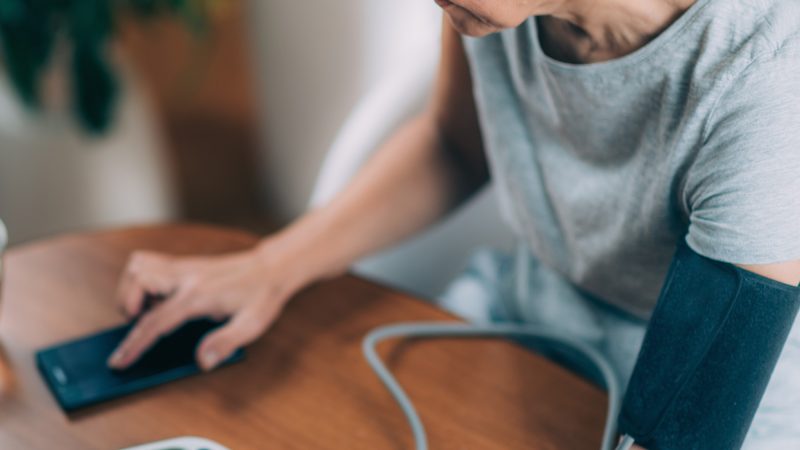Inhealthcare has helped Surrey Heartlands ICS to launch a new remote monitoring service for NHS patients to manage high blood pressure at home and reduce emergency hospital admissions and attendances at GP Practices.
In a population area of 1.1 million people, 142.7k are living with hypertension, a major cause of strokes and heart attacks. It is estimated that this long-term condition is poorly controlled and a higher risk in up to one third of these people.
A local trial involving a small cohort of 69 patients in four GP practices in the Stanwell area of Surrey Heartlands found the digital service helped 53 per cent of users move from high to normal threshold blood pressure within three months and 56 per cent of them had achieved this through adopting lifestyle changes such as increasing exercise or changing their diet. The ICS believes that expanding the service could help thousands of patients to manage their conditions, improve their health and save millions of pounds in reduced use of NHS services.
Surrey Heartlands used Inhealthcare’s software to roll out the Oximetry at Home remote monitoring service for Covid patients last year. The ICS extended the Inhealthcare service to deliver the blood pressure monitoring.
The service connects patients with clinicians and enables safe and secure sharing of health data. Using a simple device provided by the NHS, patients record their blood pressure and heart rate readings on a twice-daily basis. Patients submit these for clinical review via a choice of communication channels including email, SMS text message, app or phone, making the service fully inclusive.
Inhealthcare analyses the readings, calculates averages, alerts healthcare professionals if thresholds are breached and uploads readings onto GP systems. It sends feedback and helpful information to patients, asks them to test themselves again if necessary or contact their clinical teams or NHS 111 if there are any concerns about their blood pressure readings.
Currently, clinicians have to make contact with patients personally to remind them to take readings and provide advice, adding extra work to an already stretched caseload and budget. The new service is expected to save many hours of administrative work by automating tasks. Many patients have been unable or unwilling to visit their GPs to take readings during the pandemic and BP@Home will enable them to still get the care they need without visiting their GP practice.
Studies have shown the importance of supporting patients to manage their conditions through lifestyle changes to improve health, wellbeing and satisfaction – known as patient activation. People reporting the highest levels of patient activation had fewer emergency attendances and admissions, fewer GP appointments, shorter stays when admitted for elective care and were less likely to miss appointments. The new service is designed to help patients reach the highest level to overcome inertia and work with clinicians to achieve their health goals, improve outcomes and reduce the need for unplanned care.
NHS England advises that home monitoring gives a better reflection of blood pressure, allows patients to monitor their conditions more easily, reduces deaths, heart attacks and strokes and is cost effective. It has identified home blood pressure monitoring as a priority for cardiovascular disease management as the NHS recovers from the pandemic to ensure patients can manage their hypertension remotely, reducing the need to attend GP appointments.
Read our case study: https://www.inhealthcare.co.uk/case-studies/case-study-blood-pressure-home-bphome-surrey-heartlands-ics/

